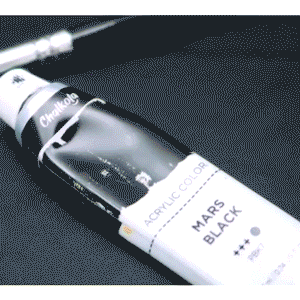Back to the Art Creators' Hub ▸ Choosing the Right Watercolor Paint
Choosing the Right Watercolor Paint
When choosing watercolors, you should take into consideration your painting preferences and needs. Where will you paint? What size of artworks do you want to create?
If you haven’t thought about these things yet, don’t worry. The best way to find out is to get out there and paint! A watercolor set works great for this purpose and will allow you to experiment without spending too much on supplies. Over time, you’ll discover what kind of paint you prefer, and you can invest in more supplies for your projects.

If you already have an idea of what your painting style is, here are some factors to consider before you buy more watercolors:
Quality
Similar to acrylic paint, watercolors are available in two grades: student quality and artist quality. Artist watercolors contain much more pigment and are longer lasting compared to their student-quality counterparts. They’re also smoother and easier to blend as they contain premium ingredients.

Student paint, on the other hand, is more affordable but contains more fillers and synthetic pigment substitutes. This means the colors may be less vibrant or fade over time. It’s great for practice or initial studies, but using artist-quality paint ensures that your artworks will remain vivid for longer.
Colors
Most watercolor sets contain a good selection of colors, so you don’t need to worry about buying individual pans or tubes for a while. These colors can also be mixed, giving you an even wider spectrum to work with.

If you want to buy individual paints, keep in mind that color names are not standardized across brands. Instead of matching color names, look at the pigment codes (usually indicated on the label or packaging). This will help you find the right match if you buy from two or more brands.
Lightfastness
This refers to the “permanence” of the paint, or how resistant it is when exposed to light. This is an essential factor to consider if you want to display your artworks. One standard measure of lightfastness is the ASTM scale, which classifies paints as either excellent, good, or poor. Not all manufacturers use the same standards, but you can expect most artist-quality paints to have an excellent or good permanence rating.

Tubes or Pans?
Whether you use tubes or pans largely depends on your painting style and preferences. Do you like to paint plein air (outdoors)? Do you work with large canvases? Do you only paint at home, or do you want portable watercolors?

Pans are round or rectangular blocks of paint that can be activated with water. You can purchase them individually or in sets, with fantastic options available for every budget. They are also available in half pan sizes if you need something more portable. However, pans only let you take a small amount of paint every time. This could pose a challenge if you need broad layers (also known as washes) of color for your project.
Tubes, on the other hand, contain cream-like watercolors that can be applied directly to the paper for a more saturated wash. You can also mix them with water to achieve the fluidity and transparency you need. Tubes are preferable if you work on large projects and need to have a lot of paint on hand. They’re also the paint of choice for professional artists who regularly work at home or in their own studio.
Some artists use pans for small, initial studies, then paint the final work with tube watercolors. Some only use one type and find that it perfectly suits their needs. As you learn watercolor painting, we recommend trying both so you can discover which type you prefer working with.

